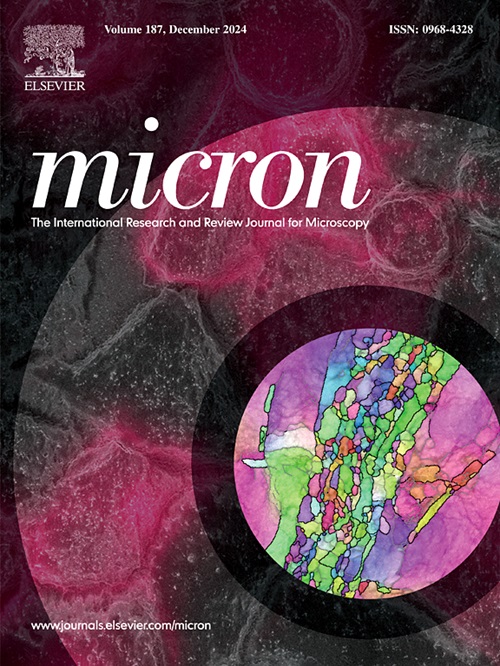Fast STEM image simulation in low-energy transmission electron microscopy by the accurate Chen-van-Dyck multislice method
IF 2.2
3区 工程技术
Q1 MICROSCOPY
引用次数: 0
Abstract
The Chen-van-Dyck (CVD) formulation as a rigorous numerical solution to the Schrödinger equation has been demonstrated being the only accurate multislice method for calculating diffraction and imaging in low-energy transmission electron microscopy. The CVD formulation not only considers the forward scattering effects but also includes the backscattering effects. However, since its numerical computation has to be performed in real-space, the CVD method may suffer from divergence and inefficiency in computing time, especially when used for low-energy scanning transmission electron microscopy (STEM) image simulation. The present study investigates the influence of cutoff value and slice thickness on the accuracy and efficiency of STEM image simulation using this formula. The results show that a small cutoff value is required in the low-energy regime to ensure accuracy, especially for thick specimens. The optimal slice thickness can be predicted approximately by a simple equation. To speed up STEM imaging simulation by up to 17 times using the CVD formulation, a hybrid computation model incorporating multiple graphic process units (GPUs) is suggested, which is of great significance for quantitative STEM imaging in low-energy transmission electron microscopy. The significance of including backscattering effect in STEM image simulation is estimated in comparison with forward-scattering effect.
用精确的Chen-van-Dyck多层切片法在低能透射电子显微镜下快速模拟STEM图像。
Chen-van-Dyck (CVD)公式作为Schrödinger方程的严格数值解已被证明是计算低能透射电子显微镜衍射和成像的唯一精确的多层方法。CVD公式不仅考虑了前向散射效应,还考虑了后向散射效应。然而,由于其数值计算必须在实空间中进行,CVD方法在计算时间上存在发散性和低效率,特别是在用于低能量扫描透射电子显微镜(STEM)图像模拟时。利用该公式研究了截止值和切片厚度对STEM图像仿真精度和效率的影响。结果表明,在低能状态下,需要较小的截止值以保证精度,特别是对于厚试件。最佳切片厚度可以用一个简单的方程近似预测。为了将CVD公式用于STEM成像模拟的速度提高17倍,提出了一种包含多个图形处理单元(gpu)的混合计算模型,这对低能透射电镜中STEM的定量成像具有重要意义。通过与前向散射效应的比较,估计了后向散射效应在STEM图像仿真中的重要性。
本文章由计算机程序翻译,如有差异,请以英文原文为准。
求助全文
约1分钟内获得全文
求助全文
来源期刊

Micron
工程技术-显微镜技术
CiteScore
4.30
自引率
4.20%
发文量
100
审稿时长
31 days
期刊介绍:
Micron is an interdisciplinary forum for all work that involves new applications of microscopy or where advanced microscopy plays a central role. The journal will publish on the design, methods, application, practice or theory of microscopy and microanalysis, including reports on optical, electron-beam, X-ray microtomography, and scanning-probe systems. It also aims at the regular publication of review papers, short communications, as well as thematic issues on contemporary developments in microscopy and microanalysis. The journal embraces original research in which microscopy has contributed significantly to knowledge in biology, life science, nanoscience and nanotechnology, materials science and engineering.
 求助内容:
求助内容: 应助结果提醒方式:
应助结果提醒方式:


